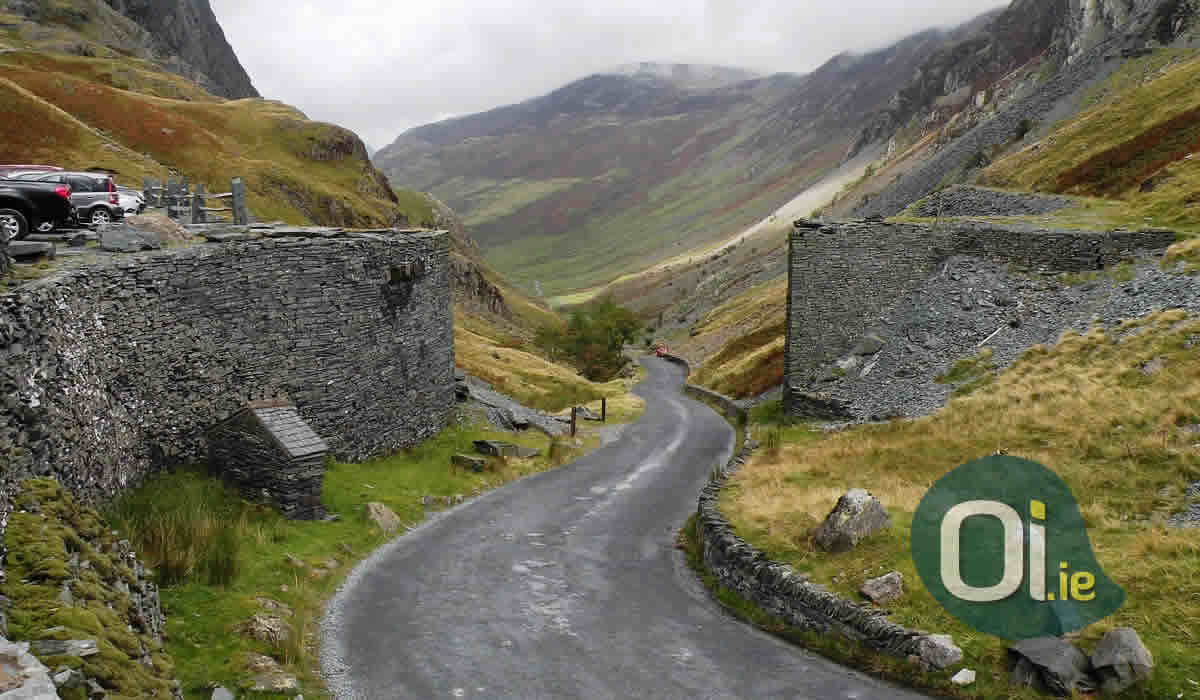Although small, Ireland is full of incredible places to visit, many of them only accessible by car. There are several famous routes, including the Wild Atlantic Way, a 2500 km route along the west coast, passing through nine counties and beautiful places along the way.
If you are planning to hit the road and explore this incredible country, we have separated some items for you to be aware of before hitting the road. Check out:
Right hand drive
It is worth remembering that Ireland uses the English system, that is, everything is unlike Brazil, including the car. The steering wheel is on the right side and the driver shifts gears with his left hand, which can “bug” many people’s brains. Pedals, at least, are the same as Brazil.
When making curves, remember the rule: sharp curves to the left, and sharp curves to the right. In addition, overtaking must always be done on the right, and the roundabouts are traveled in a clockwise direction. So it is important that you feel safe before you hit the road for a longer trip.
Navigation
Most car rental companies charge a high price for GPS rentals, but you can use your cell phone peacefully as a navigation device, without paying anything for it. Google Maps allows you to download maps of a region so that navigation works even without the internet. However, for longer trips, there are better apps, such as HERE WeGo and Maps.me, that allow you to download maps of the entire country so you don’t spend your cell phone data.
Roundabouts
In Ireland there are many roundabouts, many with more than one lane. Just like in Brazil, always give preference to those who are already there, and know in advance which exit you will take. Imagine the roundabout like a clock: if the exit is between 6 am and 12 pm, stay in the left lane; if the departure is between 12h and 6h, stay in the right lane.
Tolls
There are eleven toll roads in Ireland. All of them accept payment with cash, with the exception of the M50, in Dublin, which works with a system of cameras that register the license plate automatically, without having to stop. To pay the toll fee, you must have a Toll Tag in the vehicle (if the car is rented, check with the rental company at the time of pickup). It is also possible to pay the M50 toll through this website, in advance or until 8 pm the next day, if you do not want to win a fine.
Fueling
As is common in the USA and the rest of Europe, gas stations are self-service, that is, there is no gas station attendant, and you must fill the car yourself. Be aware of the type of fuel the vehicle uses (gasoline or diesel), as putting the wrong fuel can be a problem! Most of the time, the color of the nozzle corresponds to the color of the tank (black for diesel, green for gasoline).
When you rent a car, as a rule, the tank is already full and you must return it full. Some rental companies, however, offer the possibility to return the car with an empty tank for a fee. Do not accept the offer, as the value is often disadvantageous to the customer.
Parking
The ease and cost of parking is proportional to the size of the city. In Dublin, it will be difficult and expensive. In small towns in the interior, it is easy to find free street parking. In some cities, there are public parking lots or parking meters on the streets. So always have some coins and cash with you, as not everyone accepts a card.
When parking on the street, watch out for signs. When there is a yellow strip parallel to the sidewalk, it means that parking is restricted, and when there are two, it means that parking is prohibited. Also, never park on bus lanes, unless signage allows at a certain time.
Signaling
Most signs are in English and Gaelic, and distances and speeds are measured in kilometers. If you cross the border into Northern Ireland, the information will be in miles.
The speed limit varies according to the type of road: 120 km / h on motorways (M), 100 km / h on national roads (N), 80 km / h on regional roads (R) and 50 km / h within the urban perimeter.
Mores
If you are driving on a little busy country road and a stranger shakes you, don’t be alarmed, this is common. In addition, if you change lanes to make room for the rear car to pass, and it responds with a light signal, that means “thank you”. If you see someone in the opposite direction giving a light signal, it means that there is some danger ahead, or some speed control.
Infractions
Ireland has a points system similar to Brazil. If you have a foreign driver’s license and earn infraction points, a record will be created and your points will be counted. If you accumulate 12 points in the 3 year period, you will lose the right to drive in Ireland.
The most common infractions cost € 80 to € 120 and yield 2-3 points in the portfolio. The infringer has 28 days, from the issuance of the notice, to pay the fine. If you do not pay in 28 days, the amount increases by 50%. In the case of rented cars, the rental company usually forwards the infraction to the customer, or charges directly from the credit card used in the reservation.



